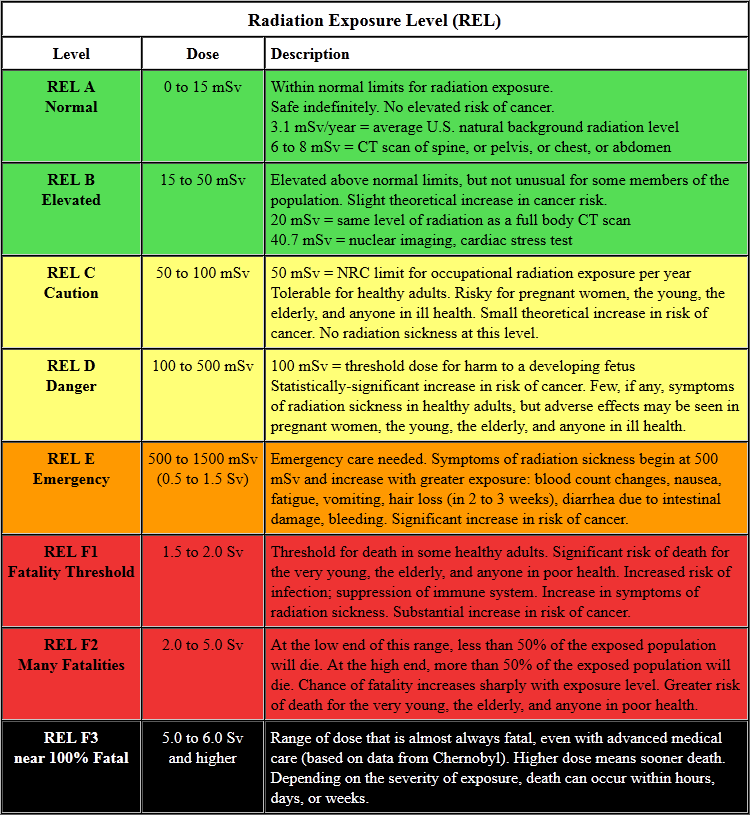| Radiation Exposure Level and Effects | ||
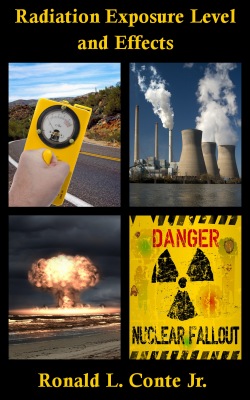
|
This booklet (now available at Amazon.com) examines different levels of radiation exposure and their effects. The radiation might be from a nuclear power plant disaster, or a dirty bomb, or fallout from a nuclear explosion. The different levels of radiation are categorized by the associated negative health effects, risk of cancer, and risk of death.
See also: U.S. CDC Radiation Emergency Countermeasures This booklet also proposes a new method of classifying radiation exposure level (REL), based on the range of accumulated dosage. Each level of exposure is designated by a letter, a word or phrase, a color code, and a range of accumulated radiation exposure in sieverts. REL = Radiation Exposure Level A: Normal -- less than 15 mSv/year [green] B: Elevated -- 15 to 50 mSv [green] C: Caution -- 50 to 100 mSv [yellow] D: Danger -- 100 to 500 mSv [yellow] E: Emergency -- 500 to 1,500 mSv (0.5 to 1.5 Sv) [orange] F1: Fatality Threshold -- 1.5 to 2.0 Sv [red] F2: Many Fatalities -- 2.0 to 5.0 Sv [red] F3: near 100% Fatal -- 5.0 to 6.0 Sv and higher [black] | |

| ||
|
Later sections in the booklet discuss treatment for exposure to radioactive isotopes -- including radioactive iodine, cesium, plutonium, americium, curium, strontium, radium, and uranium -- using various Over-The-Counter and prescription medications. Of particular interest is possible treatment for exposure to certain radioactive isotopes using widely available OTC antacids and calcium supplements. The final section discusses the decision to evacuate an area, based on the anticipated Radiation Exposure Level. Table of Contents: Introduction 1. Lethal Dose (LD50) 2. Cancer Risk 3. Level of Exposure and Effects 4. Classification of Radiation Exposure Level 5. Current Reading and Accumulated Exposure 6. Treatment with Potassium Iodide 7. Treatment with Prussian Blue 8. Treatment with DTPA 9. Treatment with Antacids and Calcium Supplements 10. Treatment with Sodium Bicarbonate 11. A Word of Caution 12. Evacuation of a Contaminated Area Endnotes Information in the booklet is taken from a variety of authoritative and reliable sources, including: government agencies (Nuclear Regulatory Commission, EPA, CDC, FDA, HHS), the book Medical Implications of Nuclear War, the National Council on Radiation Protection, and various university and medical publications. If a radiation emergency occurs, this brief inexpensive booklet could help save your life. Now available at Amazon.com |
| ||||||||||||||||||||||||||||||
| For sources supporting the above radiation exposure levels and effects, see the booklet. |
|
For treatment in cases of internal contamination with radioactive elements, see below: |
HHS, National Library of Medicine, Radiation Emergency Medical Management
Managing Internal Contamination [PDF file]
Radiation Countermeasures for Treatment of Internal Contamination
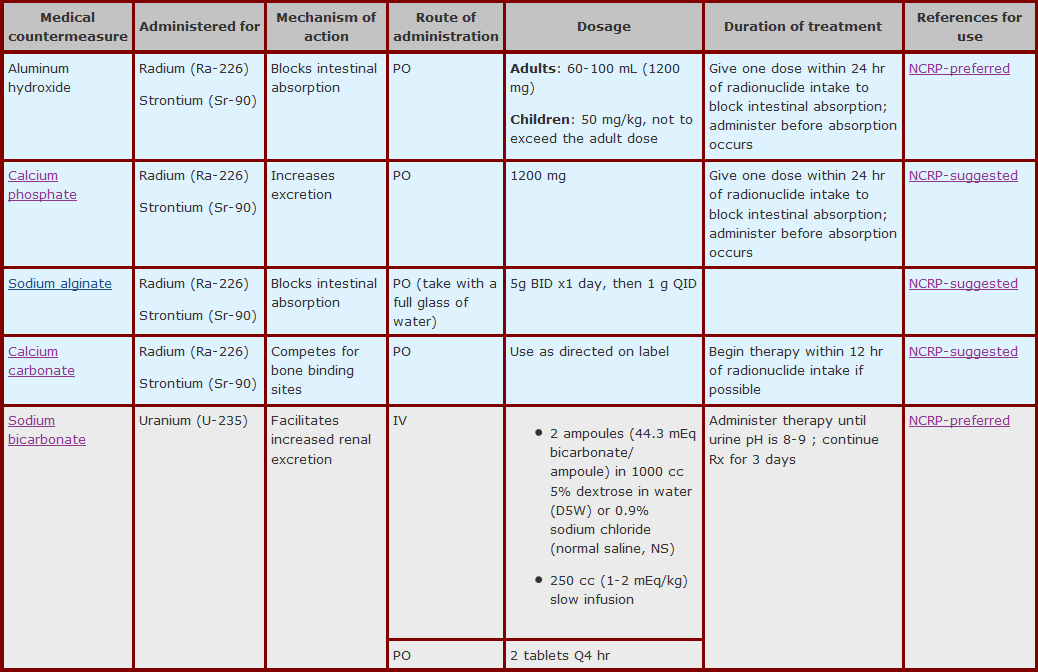
|
Tables of data below are from: Management of Persons Contaminated with Radionuclides: Handbook NCRP Report No. 161 National Council on Radiation Protection and Measurements, Bethesda, MD, 2008 |
NCRP, Report 161, Table 12.18
Drugs to block absorption of radium or strontium
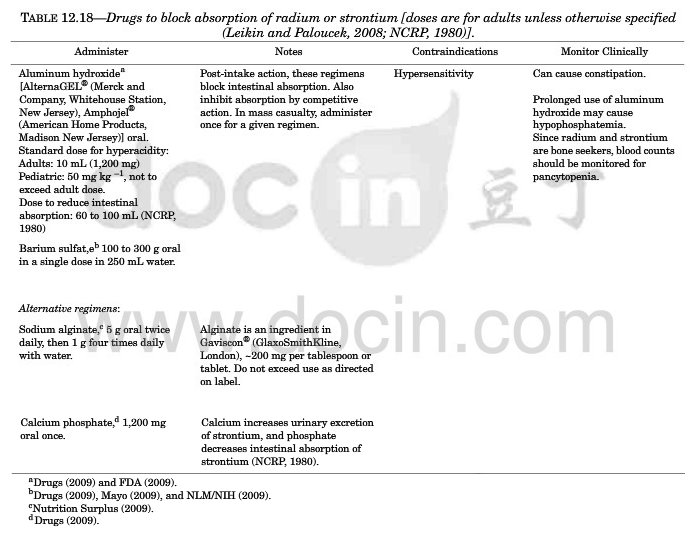
NCRP, Report 161, Table 12.19
Calcium compounds to use after absorption of strontium
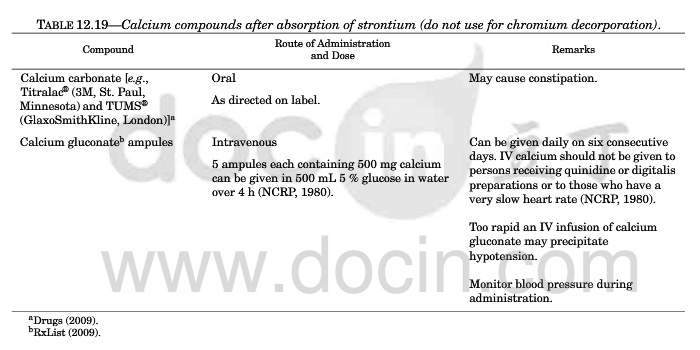
NCRP, Report 161, Table 12.22
Medical Treatment for Uranium Isotopes: U-234, U-235, U-238, and DU (depleted uranium)
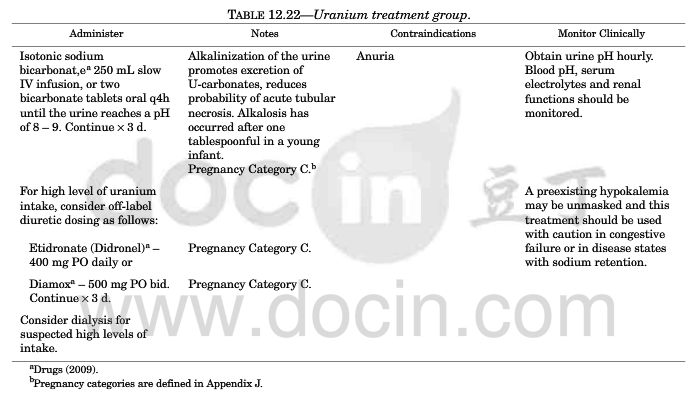
NCRP, Report 161, Table 12.2, Summary
Decorporation therapy recommendations in the United States for radionuclides of concern:
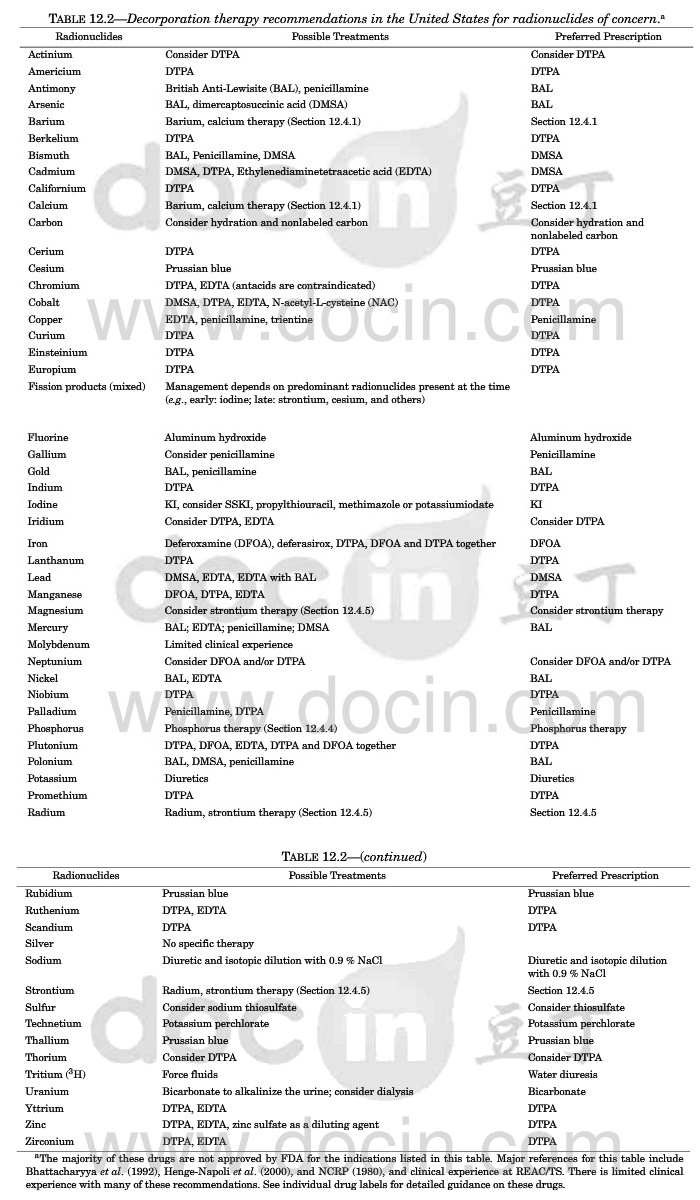
|
For further information on the above-mentioned drugs, see: Drugs.com: A - Z drug list Drugs.com: Drug Interactions Checker See also: Koenig and Schultz's Disaster Medicine: Comprehensive Principles and Practices Edited by Kristi L. Koenig, Carl H. Schultz, (Cambridge University Press, 2009) p. 498, table 30.18. For treatments using OTC medications, do not exceed maximum daily dosage on the product label, unless directed to do so by a physician or public health authorities. |
